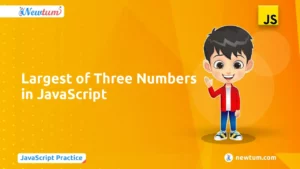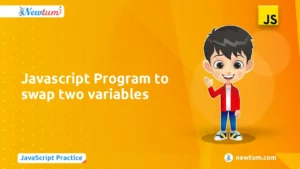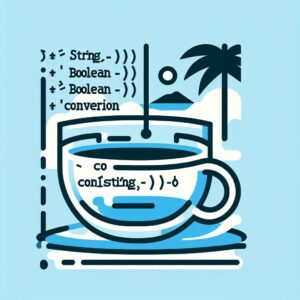Hey there, budding programmers! Ever found yourself tangled in the web of data types while coding in Java? Fear not, because today we’re diving into a handy topic that’s all about simplifying things: Java Convert Boolean to String. Whether you’re dealing with true or false values and need them as text for displays or debugging, this conversion is a skill you’ll find essential. We’re going to break it down, simplify the process, and give you the confidence to handle this common task with ease. So, stick around as we unravel the mysteries of converting Boolean values to String in Java!
How to Convert Boolean to String in Java: Simple Examples
public class BooleanToStringExample {
public static void main(String[] args) {
boolean booleanValue = true;
// Method 1: Using String.valueOf()
String strValue1 = String.valueOf(booleanValue);
System.out.println("String value (Method 1): " + strValue1);
// Method 2: Using Boolean.toString()
String strValue2 = Boolean.toString(booleanValue);
System.out.println("String value (Method 2): " + strValue2);
}
}
Explanation of the Code
1. In this simple Java program, we start by defining a class named `BooleanToStringExample`.
2. The `main` method is where everything starts executing. We declare a boolean variable, `booleanValue`, and assign it the value `true`.
3. Next, we explore two methods to convert this boolean into a string in Java:
3.1 Method 1: We use `String.valueOf()` which is a static method. It takes in the boolean value and converts it to a string representation. This string is stored in `strValue1`. We then print the resultant string using `System.out.println()`.
3.2 Method 2: The code demonstrates another way using `Boolean.toString()`. This method works similarly by converting the boolean to a string. The result is stored in `strValue2` and printed.
4. Both methods are straightforward and are commonly used in Java when you need to represent a boolean as a string. These methods showcase flexibility and simplicity in handling boolean-to-string conversions in Java.
Output
String value (Method 1): true
String value (Method 2): trueReal-Life Applications of Converting Boolean to String in Java
- While Developing Web Applications: Often, when working with web applications, developers need a boolean value to be displayed as a string on user interfaces. For instance, toggling a feature on and off using switches requires conversion to display ‘true’ or ‘false’.
- User Preference Settings: Applications frequently allow users to set preferences, such as enabling notifications. These settings are usually stored as booleans, and converting them to strings aids in creating human-friendly messages like ‘Notifications: Enabled.’
- Logging and Debugging:Logging is vital for understanding application behavior. Boolean data often needs conversion to string to write clear logs, such as ‘User login status: true’ for straightforward troubleshooting.
Common Interview Questions on Converting Boolean to String in Java
- What are the different ways to convert a boolean to a string in Java?
String.valueOf(), Boolean.toString(), and concatenation with an empty string. - How does the String.valueOf() method work for boolean conversion?
It returns a string representation of the boolean argument. - Which method would you use for readability when converting a boolean to a string?
Boolean.toString() is often considered more readable. - Why might you want to convert a boolean value to a string?
For text operations like concatenation or storage in text-based formats. - Is using concatenation for converting boolean to string a good practice?
It’s quick but less explicit compared to String.valueOf() or Boolean.toString().
Ever struggled with setting up a compiler? Our AI-powered Java online compiler changes the game. Write, run, and test your Java code instantly, making learning or project development a breeze with cutting-edge technology.
Conclusion
In conclusion, converting a Boolean to a String in Java can be straightforward when you use methods like `String.valueOf()` or `Boolean.toString()`. These methods ensure your Boolean values are seamlessly transformed into readable strings, enhancing code efficiency and clarity. As you practice, you’ll find these concepts becoming second nature. For more insights and tutorials on Java programming, visit Newtum for detailed guidance. Are you ready to dive deeper into the world of Java? Explore more and see what you can create today! Happy coding!
Edited and Compiled by
This blog was compiled and edited by Rasika Deshpande, who has over 4 years of experience in content creation. She’s passionate about helping beginners understand technical topics in a more interactive way.



